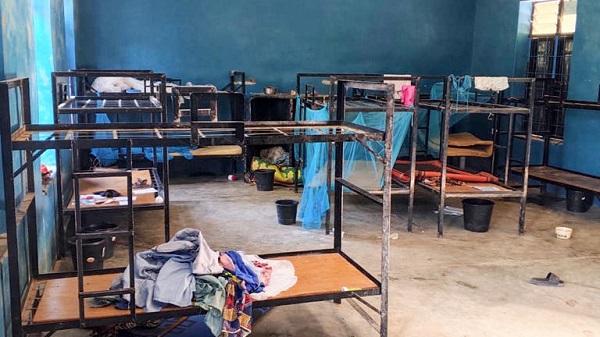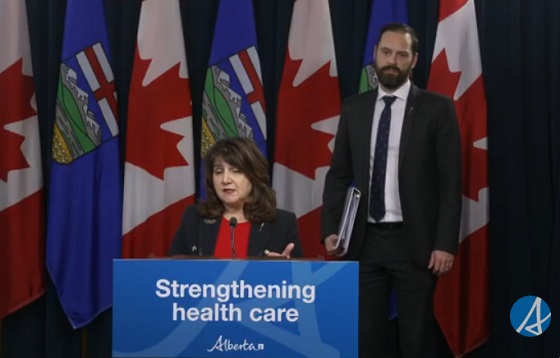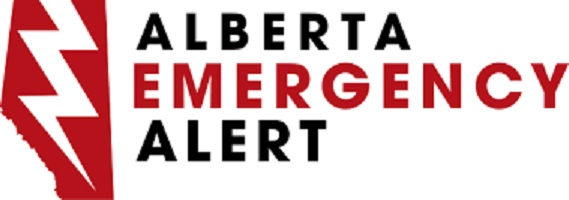Addictions
Alberta’s recovery-focused addiction agency to address data gap

By Alexandra Keeler
The launch of Alberta’s Centre of Recovery Excellence comes as Ontario and Saskatchewan also shift to recovery-oriented models
This fall, Alberta will be launching a new agency to lead recovery-focused addiction research and treatment in the province.
The Canadian Centre of Recovery Excellence (CoRE) aims to address a major challenge in Canada’s toxic drug crisis: a shortage of evidence-based, recovery-oriented research.
“[W]e hope to … support individuals on their recovery journey using the best available evidence on what works and what does not work,” the centre’s communications lead Katy Merrifield told Canadian Affairs in a written statement.
“There is also a lack of tangible research centred on the outcomes of recovery-focused policy, which is what CoRE aims to address,” she said.
The move comes at a time when Ontario and Saskatchewan are also shifting their policy responses away from harm-reduction strategies — such as safe consumption sites and needle exchange programs — toward more recovery-oriented models.
Last week, Ontario announced it would be closing 10 safe consumption sites located near daycares and schools and opening 19 recovery hubs. It also plans to prevent municipalities from establishing new consumption sites, requesting the decriminalization of illegal drugs or participating in federal safe supply initiatives, Canadian Affairs reported last week.
Early signs of success
CoRE’s launch is part of Alberta’s broader approach to addiction under the United Conservative Party government. The party, which has been in power since 2019, favours a recovery-oriented approach over a harm-reduction model.
In 2019, Alberta committed $140 million over four years to enhance addiction services, which has increased the number of available treatment spaces from 19,000 to 29,400. The province has eliminated a $40-a-day user fee at publicly funded addiction treatment facilities. And it has authorized police officers to assist detainees in seeking treatment.
The number of opioid-related deaths in the first three months of 2024 was 452, down from a high of 627 deaths in Q1 2023. However, it is still above the 241 deaths registered in the first quarter of 2020, according to the Alberta Substance Use Surveillance System.
Despite these early signs of success, the province would like to see further data to support its recovery-focused policy decisions.
“There is no clear centre of recovery excellence that can advise on what works and does not work when it comes to mental health and addictions,” Alberta’s Minister of Mental Health and Addiction Dan Williams said April 2 when announcing the creation of CoRE.
“One challenge with addiction research, and research in general, is there is often an attempt to look at a very specific intervention over a short period of time,” said Merrified. “[B]roader, long-term research is time consuming and expensive.”
CoRE will investigate the number of Albertans affected by addiction, their recovery journeys and outcomes, such as return to work, access to housing and family reunification.
The agency also plans to integrate global best practices into Alberta’s programs.
“From Portugal’s commission for drug dissuasion combined with their massive scale of recovery spaces to Italy’s use of recovery communities, we look forward to incorporating global lessons where applicable,” said Merrifield.
Subscribe for free to get BTN’s latest news and analysis – or donate to our investigative journalism fund.
Industry funding
Alberta’s 2024 budget committed $5 million in funding to launch CoRE.
Merrifield says CoRE’s funding structure will be a key point of distinction between it and the British Columbia Centre on Substance Use, which is another key player in addiction research and education.
In contrast to CoRE, the B.C. centre prioritizes addiction medicine and harm reduction.
“Our vision is to enable the well-being of people who use substances through evidence-informed, stigma-free policies,” the centre’s website says.
“CoRE has safeguards enshrined in legislation to protect against receiving external funding that could be seen as attempting to bias research results,” said Merrifield, noting the centre will not accept industry funding from pharmaceutical or cannabis companies.
By contrast, the British Columbia Centre on Substance Use does receive funding from the pharmaceutical company Indivior, the pharmacy chain Shoppers Drug Mart and the cannabis companies Tilray and Canopy Growth.
Indivior is the maker of Suboxone, a medication prescribed for opioid dependence. Indivior is currently the subject of at least two class-action lawsuits alleging Indivior failed to disclose Suboxone’s adverse side effects, Canadian Affairs reported in August.
In 2021, Shoppers Drug Mart offered a $2-million gift to the University of British Columbia to establish a pharmacy fellowship and support the education of pharmacist-focused addiction treatment at the British Columbia Centre on Substance Use.
Asked about the risk that drug industry funding could compromise the objectivity of their research, the B.C. centre referred Canadian Affairs to their website’s funding page. The website states their research is supported by peer-reviewed grants and independent ethical reviews to ensure objectivity.
Similar programs
Kevin Hollett, communications lead for the British Columbia Centre on Substance Use, said the centre is willing to collaborate with CoRE.
“We would welcome opportunities to collaborate and share knowledge with the CoRE team following their operational launch and as they define their research scope,” he said in a written statement.
CoRE was initially slated to be operational this summer, but launch details have not yet been announced.
At a conference on April 4, Minister Williams announced plans for CoRE to collaborate with Ontario and Saskatchewan on recovery-focused treatment systems. Currently, both provinces lack a direct equivalent to CoRE or B.C.’s centre.
“Many jurisdictions are interested in learning from the Alberta Recovery Model and implementing similar programs,” said Merrifield.
This article was produced through the Breaking Needles Fellowship Program, which provided a grant to Canadian Affairs, a digital media outlet, to fund journalism on addiction and crime in Canada. Articles produced through the Fellowship are co-published by Break The Needle and Canadian Affairs.
Break The Needle. Our content is always free – but if you want to help us commission more high-quality journalism, consider getting a voluntary paid subscription.
Addictions
Activists Claim Dealers Can Fix Canada’s Drug Problem

By Adam Zivo
We should learn from misguided experiments with activist-driven drug ideologies.
Some Canadian public-health researchers have argued that the nation’s drug dealers, far from being a public scourge, are central to the cause of “harm reduction,” and that drug criminalization makes it harder for them to provide this much-needed “mutual aid.” Incredibly, these ideas have gained traction among Canada’s policymakers, and some have even been put into practice.
Gillian Kolla, an influential harm-reduction activist and researcher, spearheaded the push to whitewash drug trafficking in Canada. Over the past decade, she has advocated for many of the country’s failed laissez-faire drug policies. In her 2020 doctoral dissertation, she described her hands-on research into Toronto’s “harm reduction satellite sites”—government-funded programs that paid drug users to provide services out of their homes.
The sites Kolla studied were operated by the nonprofit South Riverdale Community Health Centre (SRCHC) in Toronto. Addicts participating in the programs received $250 per month in exchange for distributing naloxone and clean paraphernalia (needles and crack pipes, for example), as well as for reversing overdoses and educating acquaintances on safer consumption practices. At the time of Kolla’s research (2016–2017), the SRCHC was operating nine satellite sites, which reportedly distributed about 1,500 needles and syringes per month.
Canada permits supervised consumption sites—facilities where people can use drugs under staff oversight—to operate so long as they receive an official exemption via the federal Controlled Drugs and Substances Act. As the sites Kolla observed did not receive exemptions, they were certainly illegal. Kolla herself acknowledged this in her dissertation, writing that she, with the approval of the University of Toronto, never recorded real names or locations in her field notes, in case law enforcement subpoenaed her research data.
Even so, the program seems to have enjoyed the blessing of Toronto’s public health officials and police. The satellite sites received local funding from 2010 onward, after a decade of operating on a volunteer basis, apparently with special protection from law enforcement. In her dissertation, Kolla described how SRCHC staff trained police officers to leave their sites alone, and how satellite-site workers received special ID badges and plaques to ward off arrest.
Kolla made it clear that many of these workers were not just addicts but dealers, too, and that tolerance of drug trafficking was a “key feature” of the satellite sites. She even described, in detail, how she observed one of the site workers packaging and selling heroin alongside crackpipes and needles.
In her dissertation, Kolla advocated expanding this permissive approach. She claimed that traffickers practice harm reduction by procuring high-quality drugs for their customers and avoiding selling doses that are too strong.
“Negative framings of drug selling as predatory and inherently lacking in care make it difficult to perceive the wide variety of acts of mutual aid and care that surround drug buying and selling as practices of care,” she wrote.
In truth, dealers routinely sell customers tainted or overly potent drugs. Anyone who works in the addiction field can testify that this is a major reason that overdose deaths are so common.
Ultimately, Kolla argued that “real harm reduction” should involve drug traffickers, and that criminalization creates “tremendous barriers” to this goal.
The same year she published her dissertation, Kolla cowrote a paper in the Harm Reduction Journal with her Ph.D. supervisor at the Dalla Lana School of Public Health. The article affirmed the view that drug traffickers are essential to the harm-reduction movement. Around this time, the SRCHC collaborated with the Toronto-based Parkdale Queen West Community Health Centre— the only other organization running such sites—to produce guidelines on how to replicate and scale up the experiment.
Thankfully, despite its local adoption, this idea did not catch on at the national level. It was among the few areas in the early 2020s where Canada did not fully descend into addiction-enabling madness. Yet, like-minded researchers still echo Kolla’s work.
In 2024, for example, a group of American harm-reduction advocates published a paper in Drug and Alcohol Dependence Reports that concluded, based on just six interviews with drug traffickers in Indianapolis, that dealers are “uniquely positioned” to provide harm-reduction services, partly because they are motivated by “the moral imperative to provide mutual aid.” Among other things, the authors argued that drug criminalization is harmful because it removes dealers from their social networks and prevents them from enacting “community-based practices of ethics and care.”
It’s instructive to review what ultimately happened with the originators of this movement—Kolla and the SRCHC. Having failed to whitewash drug trafficking, Kolla moved on to advocating for “safer supply”—an experimental strategy that provides addicts with free recreational drugs to dissuade use of riskier street substances. The Canadian government funded and expanded safer supply, thanks in large part to Kolla’s academic work. It abandoned the experiment after news broke that addicts resell their safer supply on the black market to buy illicit fentanyl, flooding communities with diverted opioids and fueling addiction.
The SRCHC was similarly discredited after a young mother, Karolina Huebner-Makurat, was shot and killed near the organization’s supervised consumption site in 2023. Subsequent media reports revealed that the organization had effectively ignored community complaints about public safety, and that staff had welcomed, and even supported, drug traffickers. One of the SRCHC’s harm-reduction workers was eventually convicted of helping Huebner-Makurat’s shooter evade capture by hiding him from the police in an Airbnb apartment and lying to the police.
There is no need for policymakers to repeat these mistakes, or to embrace its dysfunctional, activist-driven drug ideologies. Let this be another case study of why harm-reduction policies should be treated with extreme skepticism.
Our content is always free
If you want to help us commission more high-quality journalism,
consider getting a voluntary paid subscription.
Addictions
Canadian gov’t not stopping drug injection sites from being set up near schools, daycares

From LifeSiteNews
Canada’s health department told MPs there is not a minimum distance requirement between safe consumption sites and schools, daycares or playgrounds.
So-called “safe” drug injection sites do not require a minimum distance from schools, daycares, or even playgrounds, Health Canada has stated, and that has puzzled some MPs.
Canadian Health Minister Marjorie Michel recently told MPs that it was not up to the federal government to make rules around where drug use sites could be located.
“Health Canada does not set a minimum distance requirement between safe consumption sites and nearby locations such as schools, daycares or playgrounds,” the health department wrote in a submission to the House of Commons health committee.
“Nor does the department collect or maintain a comprehensive list of addresses for these facilities in Canada.”
Records show that there are 31 such “safe” injection sites allowed under the Controlled Drugs And Substances Act in six Canadian provinces. There are 13 are in Ontario, five each in Alberta, Quebec, and British Columbia, and two in Saskatchewan and one in Nova Scotia.
The department noted, as per Blacklock’s Reporter, that it considers the location of each site before approving it, including “expressions of community support or opposition.”
Michel had earlier told the committee that it was not her job to decide where such sites are located, saying, “This does not fall directly under my responsibility.”
Conservative MP Dan Mazier had asked for limits on where such “safe” injection drug sites would be placed, asking Michel in a recent committee meeting, “Do you personally review the applications before they’re approved?”
Michel said that “(a)pplications are reviewed by the department.”
Mazier stated, “Are you aware your department is approving supervised consumption sites next to daycares, schools and playgrounds?”
Michel said, “Supervised consumption sites were created to prevent overdose deaths.”
Mazier continued to press Michel, asking her how many “supervised consumption sites approved by your department are next to daycares.”
“I couldn’t tell you exactly how many,” Michel replied.
Mazier was mum on whether or not her department would commit to not approving such sites near schools, playgrounds, or daycares.
An injection site in Montreal, which opened in 2024, is located close to a kindergarten playground.
Conservative Party leader Pierre Poilievre has called such sites “drug dens” and has blasted them as not being “safe” and “disasters.”
Records show that the Liberal government has spent approximately $820 million from 2017 to 2022 on its Canadian Drugs and Substances Strategy. However, even Canada’s own Department of Health admitted in a 2023 report that the Liberals’ drug program only had “minimal” results.
Recently, LifeSiteNews reported that the British Columbia government decided to stop a so-called “safe supply” free drug program in light of a report revealing many of the hard drugs distributed via pharmacies were resold on the black market.
British Columbia Premier David Eby recently admitted that allowing the decriminalization of hard drugs in British Columbia via a federal pilot program was a mistake.
Former Prime Minister Justin Trudeau’s loose drug initiatives were deemed such a disaster in British Columbia that Eby’s government asked Trudeau to re-criminalize narcotic use in public spaces, a request that was granted.
Official figures show that overdoses went up during the decriminalization trial, with 3,313 deaths over 15 months, compared with 2,843 in the same time frame before drugs were temporarily legalized.
-

 International2 days ago
International2 days ago“The Largest Funder of Al-Shabaab Is the Minnesota Taxpayer”
-

 Bruce Dowbiggin2 days ago
Bruce Dowbiggin2 days agoElbows Down For The Not-So-Magnificent Seven: Canada’s Wilting NHL Septet
-

 Censorship Industrial Complex2 days ago
Censorship Industrial Complex2 days agoUK Government “Resist” Program Monitors Citizens’ Online Posts
-

 Alberta2 days ago
Alberta2 days agoPremier Smith explains how private clinics will be introduced in Alberta
-

 International2 days ago
International2 days ago50 of the 315 students and 12 staff abducted from Catholic school in Nigeria last week have escaped
-

 Health2 days ago
Health2 days agoMore than 200 children will receive dangerous puberty blockers for new UK study
-

 Alberta2 days ago
Alberta2 days agoAlberta introducing dual practice health care model to increase options and shorten wait times while promising protection for publicly funded services
-

 Business2 days ago
Business2 days agoUS Supreme Court may end ‘emergency’ tariffs, but that won’t stop the President











